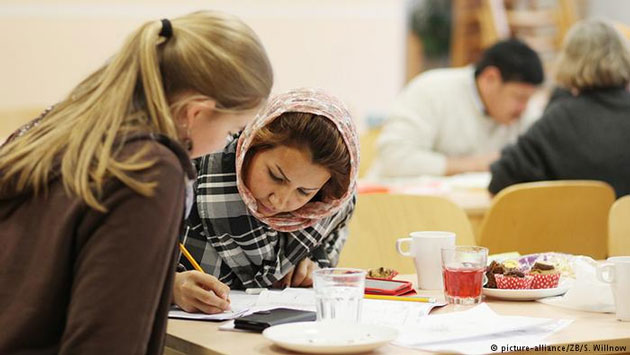In many countries, integrating refugees and migrants has become a key policy priority. Fearing higher fiscal costs and public resistance to immigration, some countries are more willing to accept groups viewed as having a “higher chance of integration.”
Yet integration is rarely defined explicitly. Some researchers view it as a process of social inclusion that enables economic mobility. Others define it as acceptance, participation, and equal opportunity. But integration may not be seen the same across countries, and is usually not the same across metric. Oftentimes social integration may lag skills integration.
Integration is not assimilation, even though these terms are often used interchangeably. Assimilation is closer to, let’s say, losing all that you have learned before, and therefore, unsurprisingly, most often meets resistance by newcomers.
The definition that appears to give integration the highest chance of success is the one that emphasizes host communities’ willingness to welcome, as much as the preparedness of refugees and migrants to adapt to a new lifestyle.
So how can integration be measured? A recent OECD study focuses on five areas: employment, education and skills, social inclusion, civic engagement like voting, and social cohesion. And the Migrant Integration Policy Index measures policies to integrate migrants in all EU member states and another ten countries across the world. It is a great tool to evaluate and compare what governments are doing in this area.
And different countries follow very different models of integration, ranging from doing nothing, or no policy, like we know is in the United States, to preventing newcomers from moving closer toward citizenship unless they can prove a degree of integration.
One of the success stories is the Canadian approach, which is akin to a public-private partnership. Local communities and migrants themselves are trusted to shape the integration process. Multiculturalism is not seen as a dirty word, but it is a recognition and acceptance of differences rather than co-existence without interaction.
European cities that have been exposed the most to migrant flows are actually de facto already following this approach. Day-to-day interactions are regulated and adjusted in the absence of formal government policy, for example in a shop or at the hairdresser. In response to the most recent inflow of refugees, bottom-up integration projects have sprung up across the continent, focusing on creating opportunities for refugees to interact with other members of the community in a natural way, and also contribute their skills and talents.
Such projects focus on common interests, be it cooking, theater or football, and allow refugees to volunteer, for example to help repair a dilapidated soccer pitch or work with local low-income groups. But many gaps still need to be filled. Most European countries lack a national authority responsible for integration. And the views of refugees and migrants themselves are often absent in the design of integration policies. Worse, when government policy puts the onus of integration on newcomers, the message is clear that there is something wrong with them.
There isn’t. Natural disasters, war and violence, and economic insecurity are a part of life, and they have driven humans to move since time immemorial. So we know that integration works, because it has defined who we are now.
Home » Opinion » The Integration Imperative
The Integration Imperative
| Elina Ribakova

